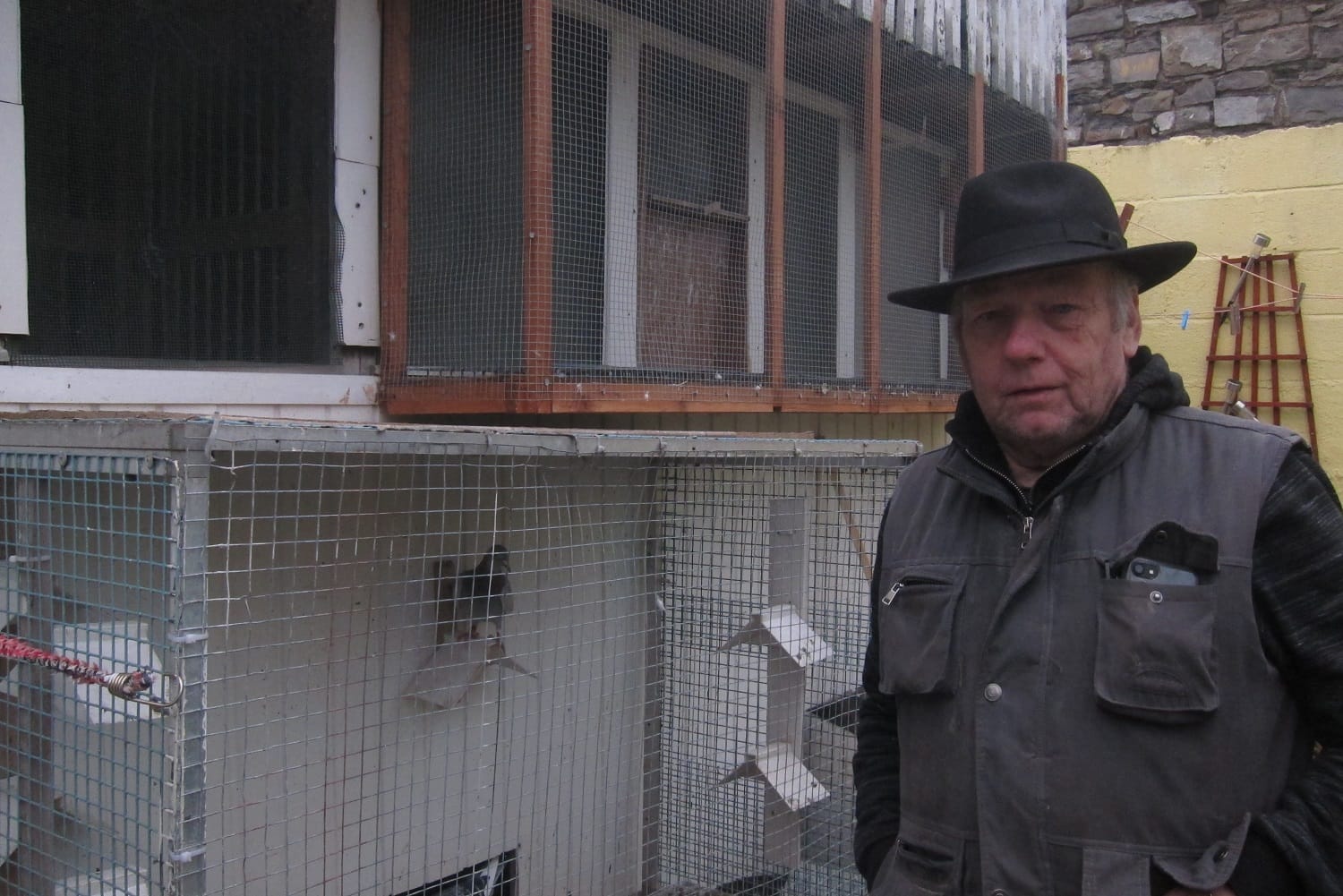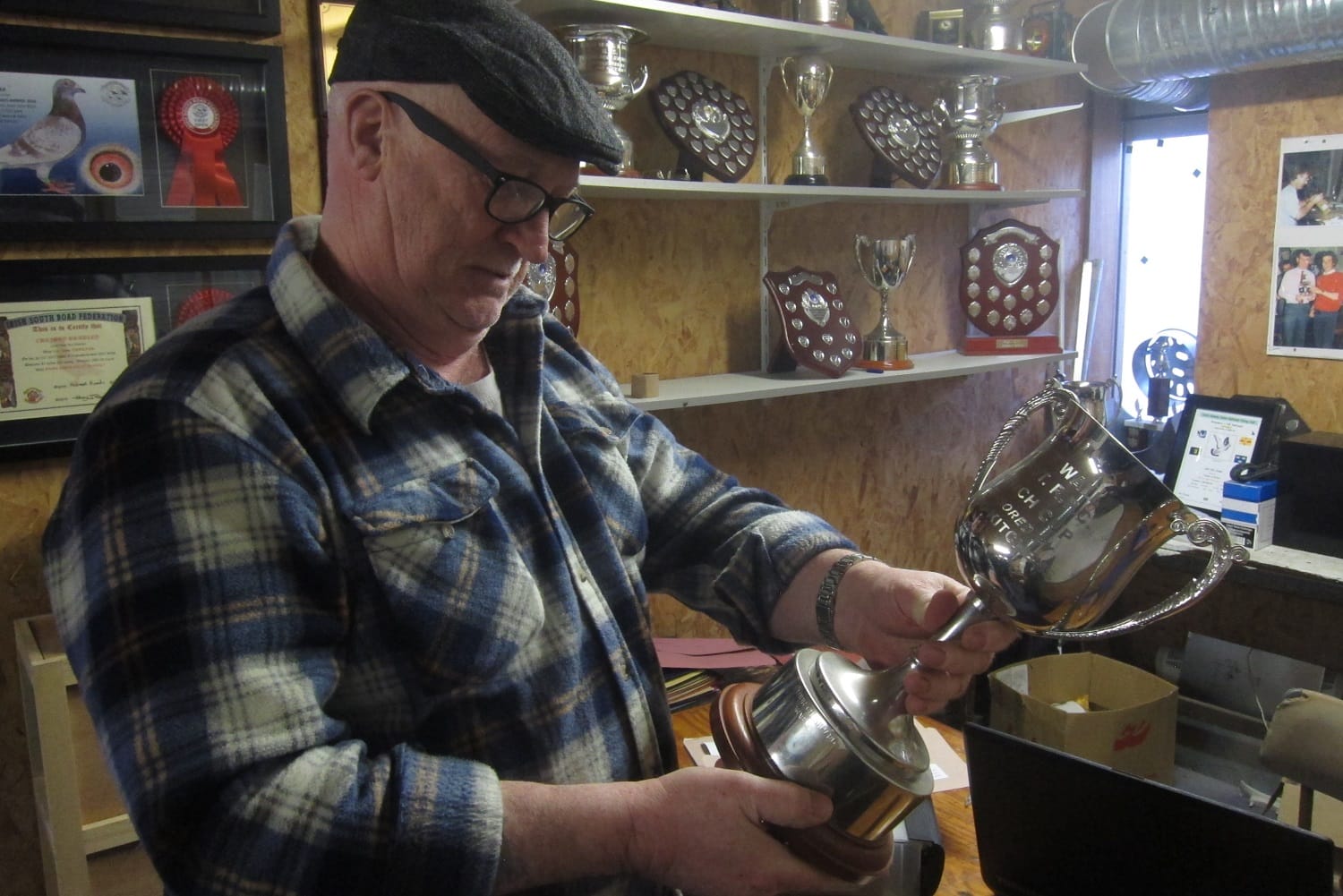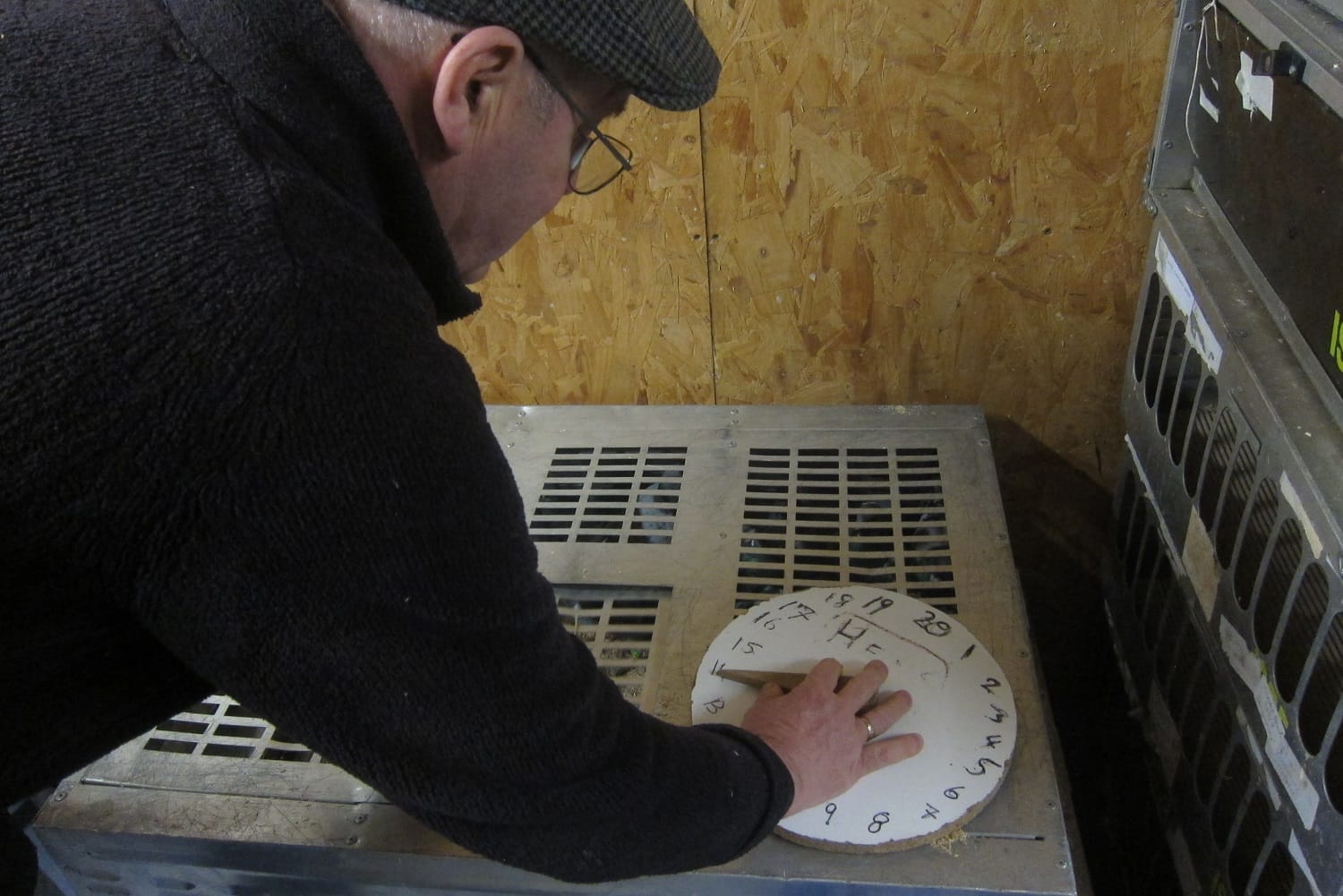What’s the best way to tell area residents about plans for a new asylum shelter nearby?
The government should tell communities directly about plans for new asylum shelters, some activists and politicians say.
“It’s a great hobby,” says John Thompson, a member of the East Wall club. “And you have to have a bit of banter. Some people can’t take it. Me, I cry.”

Much of the talk in the East Wall Pigeon Club House is about a pigeon sold a couple of weeks earlier for €1.25 million.
“If I knew I was getting into heaven, I’d pay a million two five,” says John Thompson, hunched on a chair opposite the door of the clubhouse, a flat cap on his head.
To his left, two men tag pigeons.
He’s incredulous at the price. “The best pigeon you ever get is off a neighbour or a friend. All this money … ,” he says. “It’s supposed to be a poor man’s sport.”
It’s Friday evening and members of the East Wall Pigeon Club are bringing their pigeons to be tagged for the first race of the season – a 70-mile flight from Thurles, where the pigeons are released, back to their individual hutches in Dublin.
Over the winter months, members of the club have watched on as their cocks and hens have raised their young.
They’ve trained the young birds to return to the loft with whistles and food, stretching their flights over ever-longer distances as they grew.
“Are you not racing?” shouts one man.
“No they said it’s too cold, Johnny!” says Sam Murphy, another member of the club, who wants to give his pigeons another week of training before letting them compete.
A few vans and cars draw up outside the clubhouse. Some pull out aluminium and wooden boxes from boots. Half a dozen boxes are stacked outside the clubhouse. Each contains a cacophony of cooing. Some have three or four pigeons inside. Others have twenty.
The noise terrifies a young boy in a pram, who adds to the racket with a wail.
More money in the sport means some are leaving the game, says Murphy.
“It’s all gone ridiculously expensive,” says Murphy, listing out the expenses that now go into the game. Vets, feed, the price of the birds.
Then again, he says, all hobbies have gone that way, haven’t they?
On his head is a black fedora. It’s what he uses to communicate with his pigeons – to let them know what to do, and when.
“Once they see the hat they’re out,” says Murphy. One Saturday morning, he wasn’t wearing it. The pigeons wouldn’t land into the hatch as they didn’t recognise him, he says.
“Tonight will be quiet,” says Murphy. First race of the year. Cold and windy still. Hardly ideal weather for pigeon racing.
There are only 12 members in the club now. Last year, there were 24.

The pigeon club has been here in East Wall since the early 1970s.
But its origins go further back still – to 1955, when some residents in the area decided the village needed a club of its own.
Pigeon racing is a working-class sport, says Joe Mooney, a member of the East Wall Historical Society. Many in working-class communities in the city would have had pigeon lofts.
Two years ago, the society documented the history of the East Wall Pigeon Club, showing the club’s metamorphosis from idea to reality – and it journey from its first clubhouse on St Mary’s Road, at the back of the old boy’s school, to its current headquarters at the side of the Seán O’Casey Community Centre.
The club is in a long rectangular room. A silver extraction system runs along the roof. The extraction fan helps deal with the pigeon feathers’ dust, stopping people falling ill with pigeon fancier’s lung.
“These go out tonight to Coolock,” says Murphy, as he points to the boxes of birds. “I’d say there’d be about 10,000 pigeons.”
That’s not the biggest drove to race. For the young-pigeon racing in July, Murphy says, he expects another 5,000 birds competing.
Through the door of the club, there’s a wall of trophies, shields, plaques and ribbons to the left – accolades amassed over the years from competitions in Ireland and abroad.
“They’re all in my name,” says Thompson, laughing. He points up to a kitsch non-descript figure of a man on the wall near the trophies.
“He’s Walter Mitty,” says Thompson. “We called him Walter Mitty because everyday the race when you come down, you hear more bleeding stories. It wouldn’t go in, it sat on the roof, a helicopter went by, a UFO hit it.”
To the right, boxes of birds wait to be tagged. That shows they’re eligible for the following day’s race.
At a table to the right, a few guys are busy doing the tagging, attaching the electronic tag that will beep in a time once the pigeon lands in the hutch.
The tagged birds are then put in boxes ready to be sent to Coolock – and then onwards again to Thurles in Tipperary, where they’ll start the race.

“You get jealous people in the club, you do. Now I won two big races and they wouldn’t talk to me for two fucking years. Two years,” says Thompson.
Others in the room laugh.
“It’s a great hobby,” says Thompson. “And you have to have a bit of banter. Some people can’t take it. Me, I cry.”
Before electronic tracking, there were more tears and fierce rows about whose pigeon landed back in their hutch first, says Murphy.
“There used to be rubbers on their feet and you’d take the rubber out, and you’d put it in a thimble,” says Murphy.
“Then you’d put it into a clock and you’d bang it and that’d give you bang on the time,” he says.
But that could be a hassle. Sometimes, it could take a fancier a few minutes to catch the pigeon and pluck off the rubber. And those few minutes could be the difference between winning a race and losing.
Electronic tracking is fairer. It clocks the moment the pigeon enters the hatch.
“It’s like when you’re in Dunnes Stores and you’re getting messages,” shouts another member of the club from across the room.
Still though, pigeons can be pigeons.
Once, Murphy’s pigeon arrived back to his garden and dawdled, sat on the hatch rather than going in.
It cost him the race, he says, and the prize money.
“Oh Jaysus,” he says, recoiling at the memory.

It takes time to raise racing pigeons. They have to be fed and watered every day. Lofts have to be cleaned, the pigeons trained. It’s expensive, too.
There’s also the question of space. You can’t have a pigeon loft too close to a block of flats anymore, says Murphy. Planning rules don’t allow it.
That’s edged along the sport’s decline, he says.
But he sees the main issue as disinterest. “Young people have no interest any more,” says Murphy, who was 10 years old when he started to raise pigeons.
“They’d rather be at this,” he says, shadow-tapping buttons with his hands, as if playing an invisible computer game.
Yet there’s something therapeutic about raising and racing pigeons, he says.
Something about how, just going out into the hatch and feeding the birds can be great for clearing the head, he says.
Then, there’s the hours of anticipation once a race is underway.
“The beauty of this game,” says Murphy, “is sitting in the yard and waiting.”